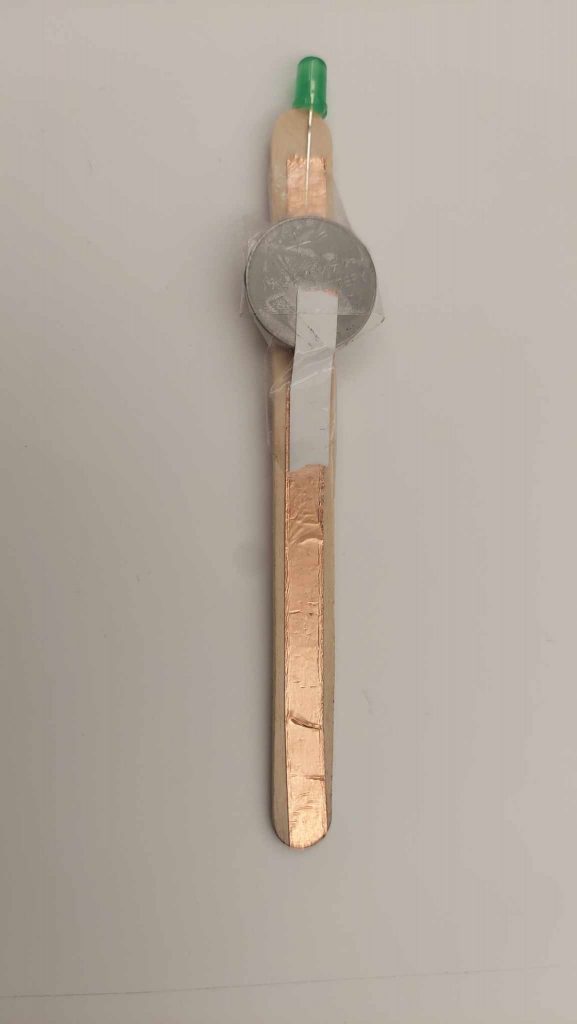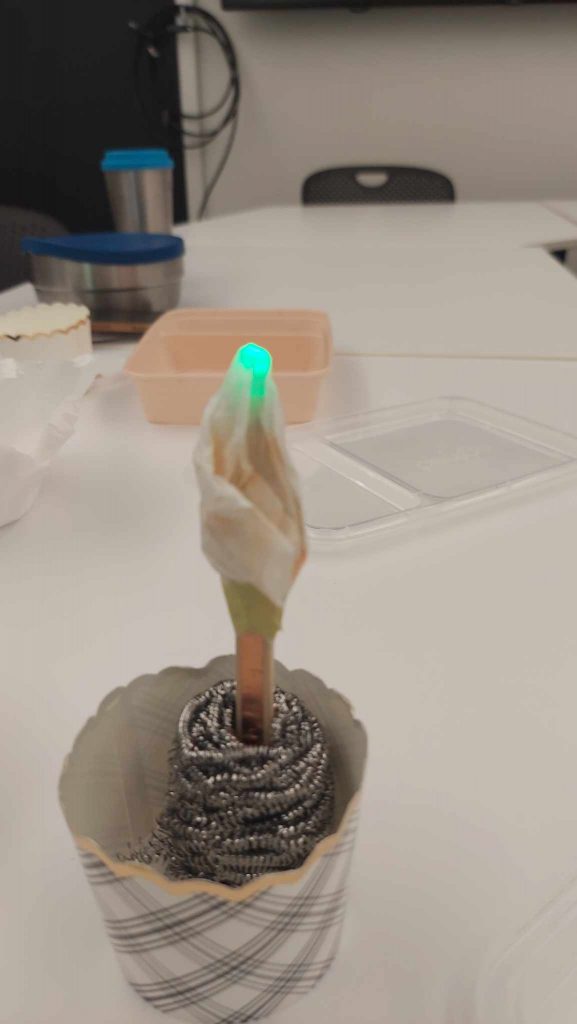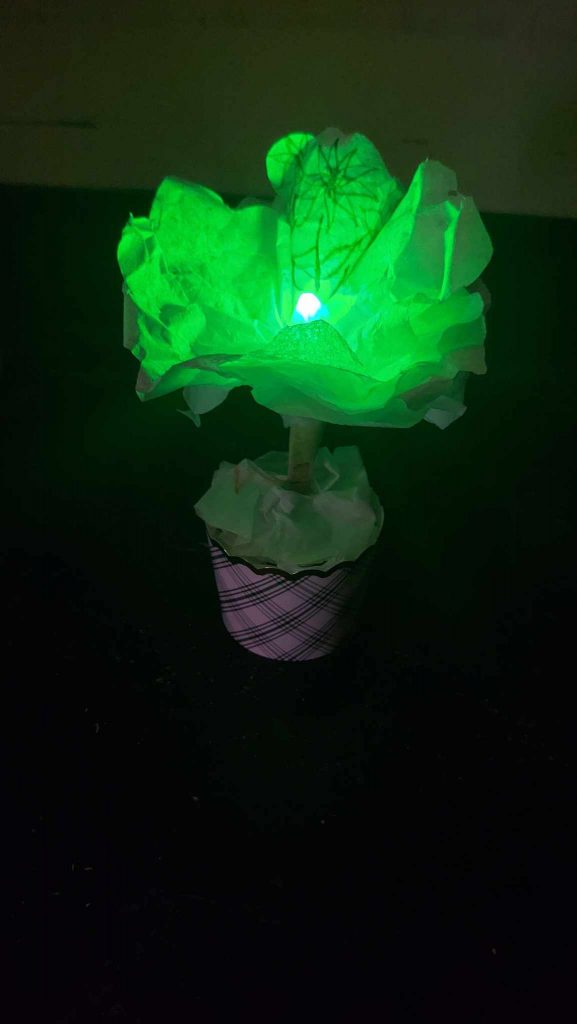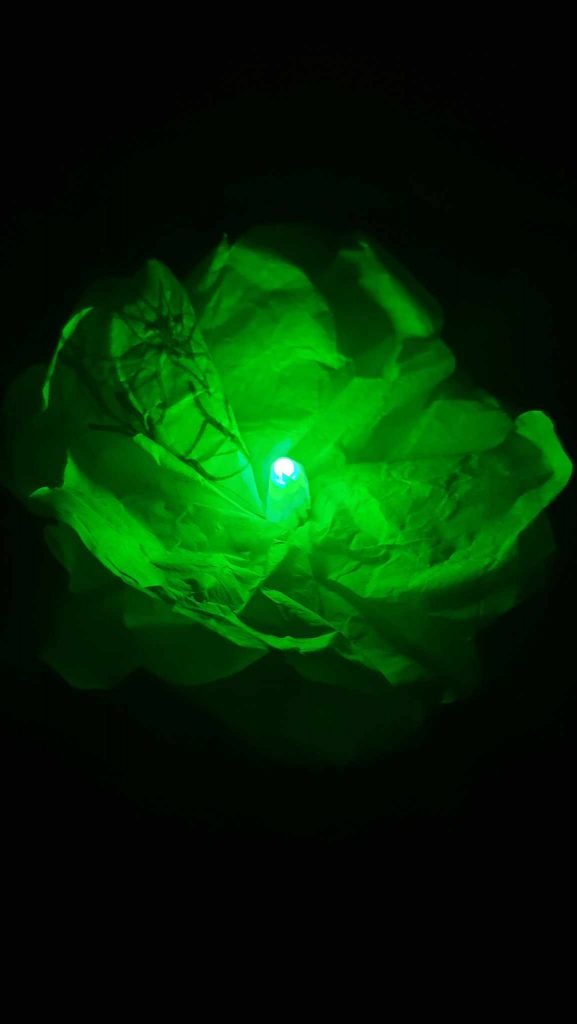Hi, this is a flower pot project to make a flower that will light up when plugged into the pot – a combination of the beauty of art and technology using closed-circuit logic. In this post, I want to talk about my journey of making this flower pot.
First, I created an open circuit with Cooper tape, LED, and battery stuck on a stick.

When plugged into a steel brush which acts like a switch, the circuit will be closed and the LED will light up.

Then from the coffee filters, I cut down and made the flower to cover the stick and the brush to cover the steel brush. This is the final product


Looking back, to be honest, I was excited about this project and I felt pretty confident in making it. As I already had some experience of circuits in my lab. However, in the middle of this project, my LED did not light up after many first tries. And sometimes, it lightened up and sometimes it did not. I felt my confidence quickly shaken and my self-efficacy felt down.
I took everything out and remade everything to ensure each step was right. Coming back and forth to the storage, I tried another light and checked on my battery. I also took a look at the original model. Multiple of those trials helped me eliminate some possibilities. It turned out that the battery and the legs of the LED were loose and whenever I pushed them hard into the circuit, the light turned on brightly. The copper tape between the battery and the other copper tape on the LED’s short leg side was mistakenly turned upside down.
The more I tried, the more confident I became. It reminded me of my coding process: when I had a bug, I just discovered all of the possibilities, made sure the logic was reasonable and strategically eliminated the odds.
Besides, my original self-efficacy in my art ability was quite low. I spent a good chunk of my time trying to decorate and still told myself it did not look great. Until my friend came and told me she loved it and we went to the dark closet to take pretty pictures, my self-efficacy was finally raised. Thanks to my persistence and my friend’s support, there is a positive change in my self-efficacy, that I am grateful for.
Overall, this was not the first time my self-efficacy was low but it usually did not stop me from starting something I was curious or passionate about. But, after a few times, it usually tends to make me think “I am not a … person”. In grade 8th, after answering right tricky questions from a famous Chemistry teacher, I got her attention. But, after one time I was told to come to the board and could not solve a question, I felt the most embarrassed about it, and my self-efficacy for it started to die down. There were times that I solved questions right but my brain chose to remember the times I stood in front of the class, so stressful and failed more. My teacher also said she was disappointed in me. More importantly, I was disappointed in myself – my self-efficacy in that subject was gone. After that, I found it hard to face Chemistry and thought “I am not a Chemistry person”. Now, looking back after learning about self-efficacy, I realize that if I talked to myself, and sought help from my friends, teachers, and families, or was persistent and knew it was not “I am” but “I did” to make self-efficacy higher and become my motivation to move forward. But it is never too late. Self-efficacy is something to learn and relearn all the time, starting with this little project.